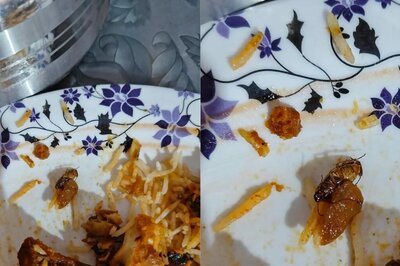
views
Oslo: The man blamed for attacks on Norway's government headquarters and a youth retreat that left at least 92 dead said he was motivated by a desire to bring about a revolution in Norwegian society, his lawyer said on Sunday. A manifesto that he is believed to have written ranted against Muslim immigration to Europe and vowed revenge on "indigenous Europeans" who he accused of betraying their heritage.
Although lawyer for the 32-year-old Norwegian suspect, Anders Behring Breivik, said his client acted alone, police conducted raids on a garage and sheds in an industrial neighborhood of eastern Oslo, said police officer Kjell Bjerklund.
Survivors of the mass shooting on Utoya island that killed at least 85 young people reported seeing two assailants, and police have said they were looking into those accounts and had not ruled out a second suspect. Another seven people were killed in Friday's bombing in an Oslo government building.
In all, 92 people were killed and 97 wounded. There are still people missing at both scenes. Six hearses pulled up at the shore of the lake surrounding the island on Sunday, as rescuers on boats continued to search for bodies in the water. Body parts remain inside the Oslo building, which housed the prime minister's office.
A manifesto published online - which police are poring over and said was posted the day of the attack - ranted that the European elite, "multiculturalists" and "enablers of Islamisation" would be punished for their "treasonous acts." Police have not confirmed that Breivik wrote the document, but his lawyer referred to it and said Breivik had been working on it for years.
The treatise ends with a detailed description of the plot, ending with a note dated 12:51 pm on July 22: "I believe this will be my last entry."
Police and his lawyer have said that Breivik confessed to the twin attacks, but denied criminal responsibility for a day that shook peaceful Norway to its core and was the deadliest ever in peacetime. He has been charged with terrorism and will be arraigned on Monday.
Police Chief Sveinung Sponheim said a forensics expert from Interpol would join the investigation on Sunday. Other offers of international assistance have been turned down.
Norway's King Harald V and his wife Queen Sonja and Prime Minister Jens Stoltenberg joined mourners on Sunday at Oslo Cathedral, where the pews were packed, and the crowd spilled into the plaza outside the building. The area was strewn with flowers and candles, and people who could not fit in the grand church huddled under umbrellas in a drizzle.
The king and queen both wiped tears from their eyes during the service for "sorrow and hope."
After the service, people sobbed and hugged one another in the streets as they streamed out of the cathedral. Many lingered over the memorial of flowers and candles.
More was coming to light Sunday about the man who police say confessed to a car bomb at government headquarters in Oslo and then, hours later, opening fire on young people at an island political retreat. Both targets were linked to Norway's left-leaning Labor Party, and authorities have said Breivik held anti-Muslim views and posted on Christian fundamentalist websites.
"He wanted a change in society and, from his perspective, he needed to force through a revolution," Geir Lippestad, his lawyer, told public broadcaster NRK. "He wished to attack society and the structure of society."
Lippestad said Breivik spent years writing the 1,500-page manifesto entitled, "2083 - A European Declaration of Independence," that police were examining. It was signed "Andrew Berwick." The date was referred to later in the document as the year that coups d'etat would engulf Europe and overthrow the elite he maligns.
Sponheim, the police chief, said there was no indication whether Breivik had selected his targets or fired randomly on the island. The manifesto vowed revenge on those who it accused of betraying Europe.
"We, the free indigenous peoples of Europe, hereby declare a pre-emptive war on all cultural Marxist/multiculturalist elites of Western Europe. ... We know who you are, where you live and we are coming for you," the document said. "We are in the process of flagging every single multculturalist traitor in Western Europe. You will be punished for your treasonous acts against Europe and Europeans."
The use of an anglicized pseudonym could be explained by a passage in the manifesto describing the founding, in April 2002 in London, of a group he calls a new Knights Templar. The Knights Templar was a medieval order founded to protect Christian pilgrims in the Holy Land after the First Crusade.
A 12-minute video clip posted on YouTube with the same title as the manifesto featured symbolic imagery of the Knights Templar and crusader kings as well as slides suggesting Europe is being overrun by Muslims. Police could not confirm that Breivik had posted the video, which also featured photographs of him dressed in a formal military uniform and in a wet suit pointing an assault rifle.
The video was a series of slides that accused the left in Europe of allowing Muslims to overrun the continent: One image showed the BBC's logo with the "C" changed into an Islamic crescent. Another declared that the end result of the left's actions would be an "EUSSR."
Police spokesman John Fredriksen confirmed that the essay was posted the day of the attacks. The document signaled an attack was imminent: "In order to successfully penetrate the cultural Marxist/multiculturalist media censorship, we are forced to employ significantly more brutal and breathtaking operations, which will result in casualties."
In the last 100 pages, the manifesto apparently lays out details of the author's social and personal life, including steroid use and an intention to solicit prostitutes in the days before the attack.
Witnesses at the island youth retreat described the way Breivik lured them close by saying he was a police officer before raising his weapons. People hid and fled into the water to escape the rampage; some played dead.
While some on the island reported that there was a second assailant and police said they were looking into that, Lippestad, the lawyer, said his client claims to have acted alone.
Police took 90 minutes from the first shot to reach the island - delayed because they did not have quick access to a helicopter and struggled to find a boat once they reached the lake. Breivik surrendered when they reached him, but before 85 people died. Another seven were killed in the bombing.
Divers continued to comb the lake waters around Utoya Island where some 600 young people were attending a Labor Party summer retreat when it came under attack, amid fears people may have drowned while trying to swim to safety.
Police said the bomb used in the Oslo blast was a mixture of fertilizer and fuel used to blow up a federal building in the U.S. in 1995. A farm supply store said Saturday they had alerted police that Breivik bought six metric tons of fertilizer, which can be used in homemade bombs.
The twin attacks have rattled largely peaceful Norway, home to the Nobel Prize for Peace and where the average policeman patrolling in the streets doesn't carry a firearm.
Norwegians pride themselves on the openness of their society and cherish the idea of free expression. In recent years, the prosperous Nordic nation has opened its arms to thousands of conflict refugees from Pakistan, Iraq and Somalia.



















Comments
0 comment